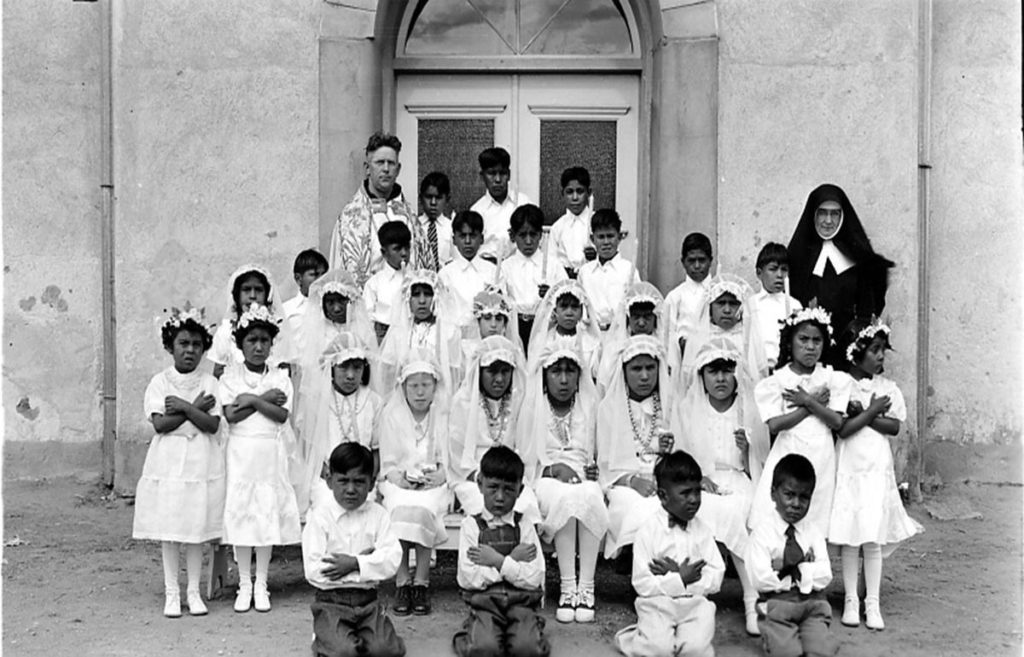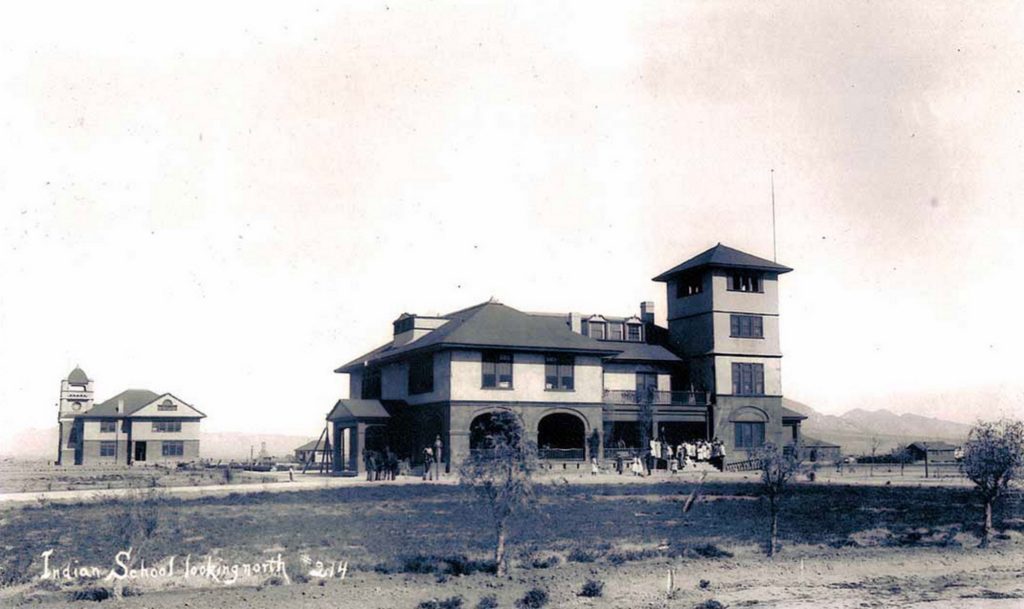History
In the late nineteenth century, following the periodic genocide of Native Americans in prior centuries, the American government instituted a series of acculturation and assimilation programs that included the removal of Native American children from their homes and communities and placing them in government and church-run boarding schools. The boarding school system attempted to diminish what was left of Native cultures and communal ties and further dispossess Native nations of their resources through the separation of children from their families, the suppression of language and culture, and psychological and physical abuse. Towards the end of the Boarding School era, in the 1960s and 70s, some boarding school students had positive experiences. These alumni attended schools that had begun to move away from their earlier assimilationist mission and were more respectful of Native culture and Native youth.
The boarding school system provides an important lens through which to examine Native resistance, resilience, and creativity during and in the aftermath of social and cultural disruption. Boarding School Stories explores the role that colonialism, power and identity play in shaping policy. Studying the schools’ mission to “kill the indian, save the man” raises powerful questions about what it means to be human and what constitutes a valuable education. The effort to erase Native cultures has had far-reaching consequences for the whole of American life: the loss of diverse vocabularies, different perspectives on the world, environmental knowledge, and the Native stories and mythology of our country. The aging Native survivors of boarding schools belong to a vanishing generation. Recording their stories provides survivors with an opportunity to preserve their memories and enables scholars, educators and students the opportunity to analyze this critical time period utilizing valuable primary sources. Reflecting on their experiences of forced assimilation, Native survivors have a great deal to teach us about resilience, the human obligation to challenge the status quo, and the complicated purpose education serves in our lives.
In June, 2012, filmmakers Jonathan Skurnik and Randy Vasquez premiered their award-winning documentary film The Thick, Dark Fog on PBS. It tells the story of Lakota Indian Walter Littlemoon’s journey of healing from his boarding school experiences on the Pine Ridge reservation in South Dakota. It took great courage for Walter to share his story, which has led to personal, familial and communal healing and wider recognition of the boarding school history. During the process of producing the film, the filmmakers realized that there are far more stories that need to be told than can be fit into a single film. As a result, Skurnik conceived of Boarding School Stories as a way to capture a wider breadth of experiences of Native people who attended boarding schools.



The Cante Sica Foundation is a 501c3 foundation whose purpose is to implement the Boarding School Stories visual history project. The Cante Sica Foundation also develops content and shares resources for related artistic projects including museum exhibitions, documentary films, books, and theater projects. This project was made possible with support from California Humanities, a non-profit partner of the National Endowment for the Humanities, Vision Maker Media, and the Kalliopeia Foundation.
Contact us at info@cantesica.org

